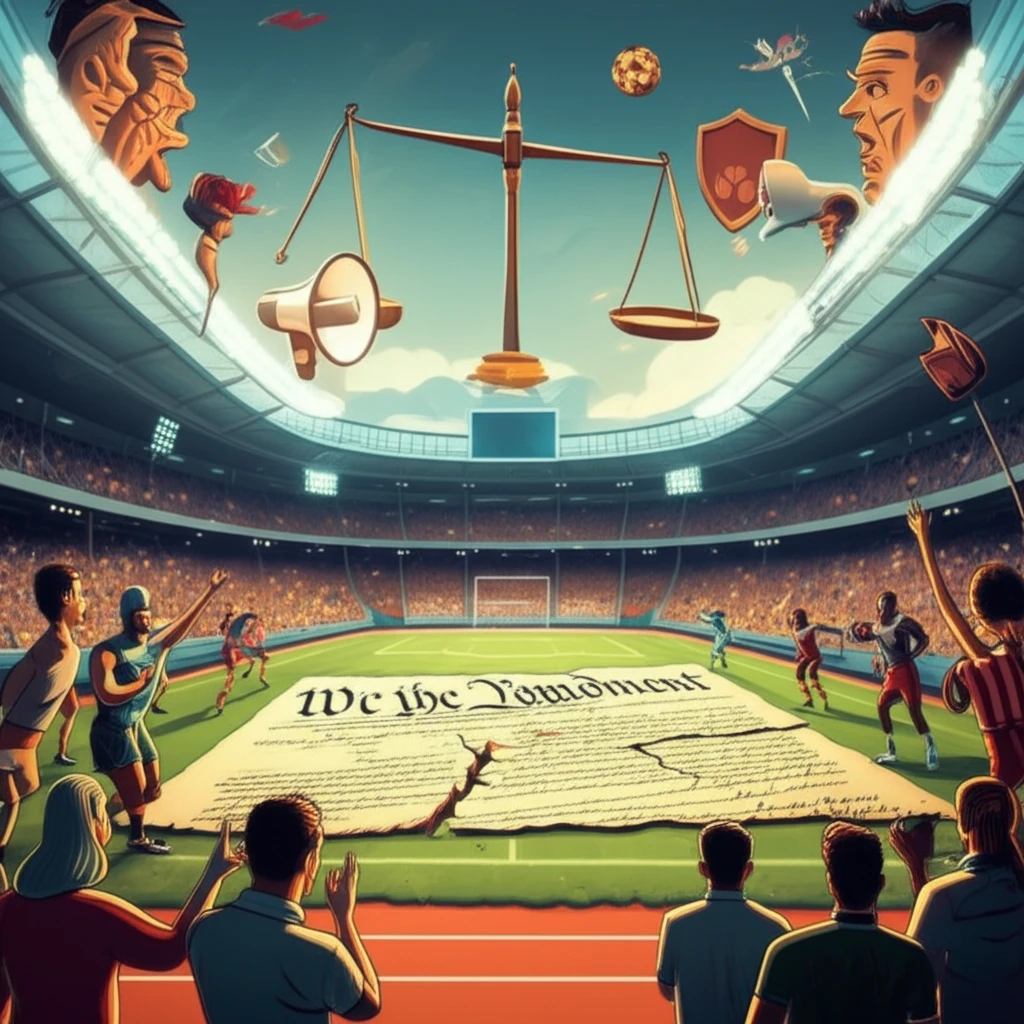
Free Speech vs. Safe Spaces: Navigating Harassment in Athletics
"Understanding the First Amendment in the context of sports, student-athlete protection, and university liability."
The fervor surrounding sports often places athletes, coaches, and administrators under intense scrutiny, subject to both admiration and critique. While passionate fans believe their admission grants them the right to express emotions freely, this expression must be balanced with the rights of individuals to be free from harassment. Determining where enthusiastic support ends and harassment begins is crucial for maintaining a safe and respectful environment.
This article examines the intersection of free speech and harassment in sports, using the case of Donnelly v. University of North Carolina as a focal point. This case provides insight into how universities navigate the legal landscape to protect their communities while upholding First Amendment principles.
We will break down the legal arguments, the court's ruling, and the practical implications for athletic administrators, coaches, and anyone involved in managing sports-related environments. Understanding these nuances is essential for fostering a culture of respect and accountability.
The Donnelly Case: A Clash of Rights

John Donnelly, Jr., a dedicated University of North Carolina (UNC) fan, engaged in a series of behaviors over several years that led to his ban from university athletic facilities. These actions included verbally harassing student-athletes at team hotels, publicly criticizing players in front of their families, making sexually suggestive comments to female staff, and persistently contacting UNC Athletics offices.
- First Amendment Violation: Donnelly asserted his ban infringed on his right to free speech.
- Arbitrary and Capricious Decision: He argued the university's decision lacked substantial evidence and was therefore invalid under North Carolina General Statute § 150B-51.
- Retaliation: Donnelly claimed the ban was a form of retaliation for his criticisms of the university, citing the Trulock v. Freeh (2001) case, which prohibits government officials from retaliating against individuals who criticize them.
Practical Implications for Athletic Programs
The Donnelly case offers vital lessons for athletic administrators, coaches, and institutions. It underscores the importance of understanding the boundaries between protected speech and harassment, documenting incidents thoroughly, and fostering open communication within athletic communities. By implementing proactive measures and clear policies, organizations can create safer, more respectful environments for all participants.
